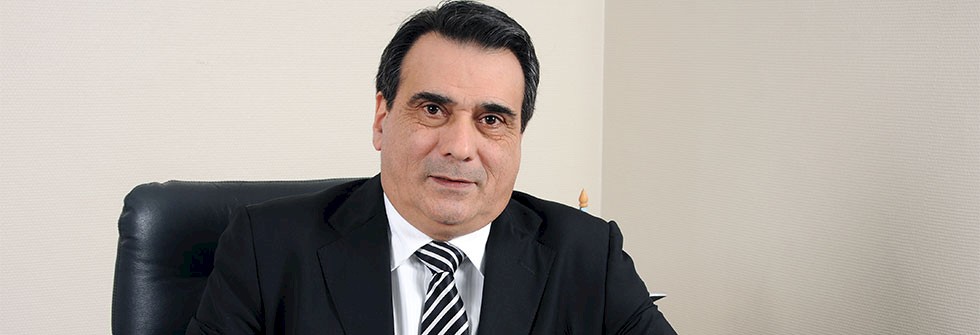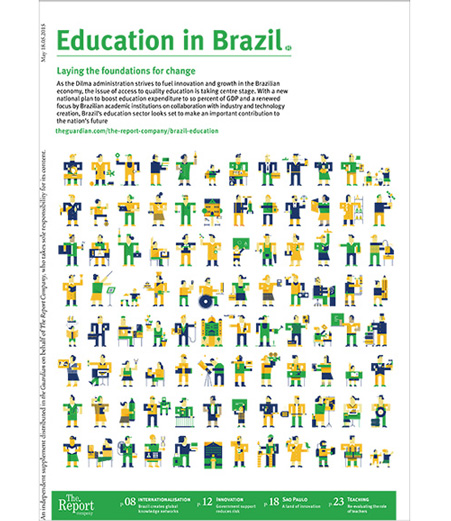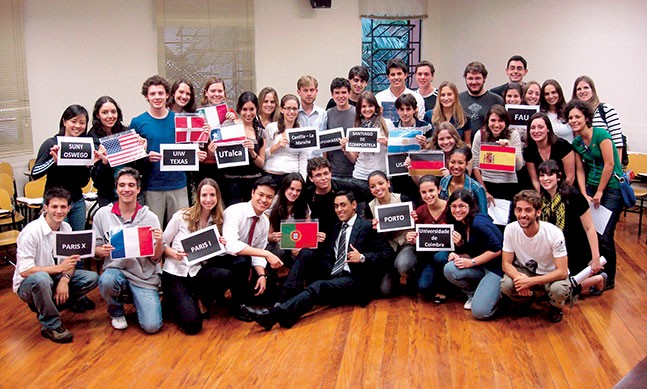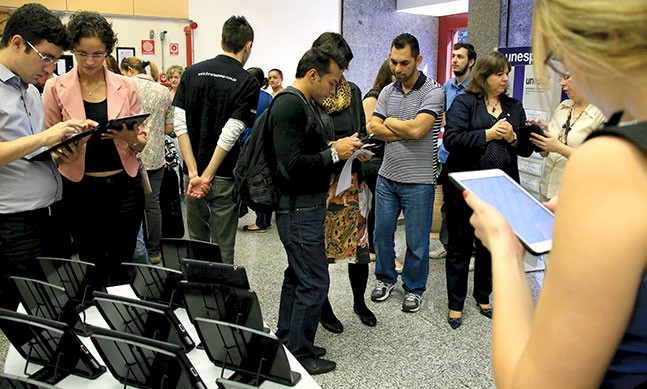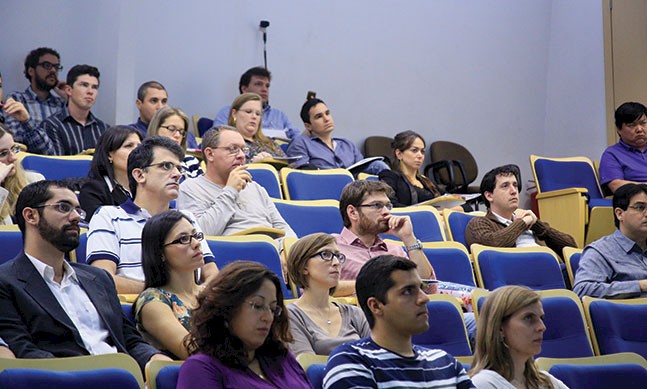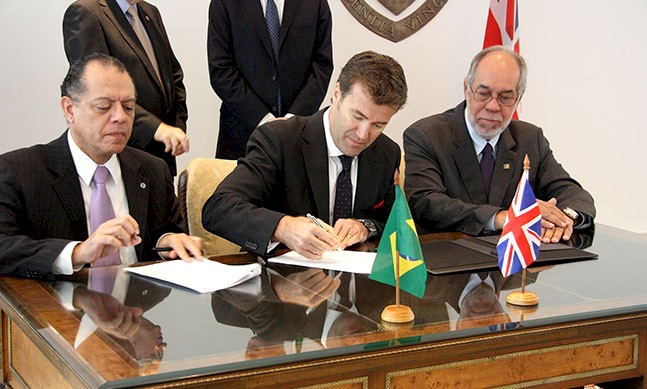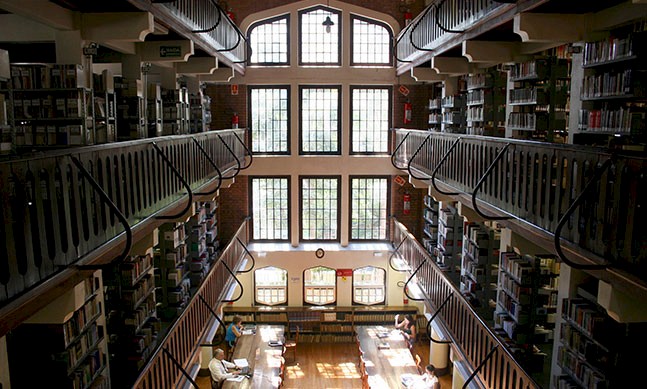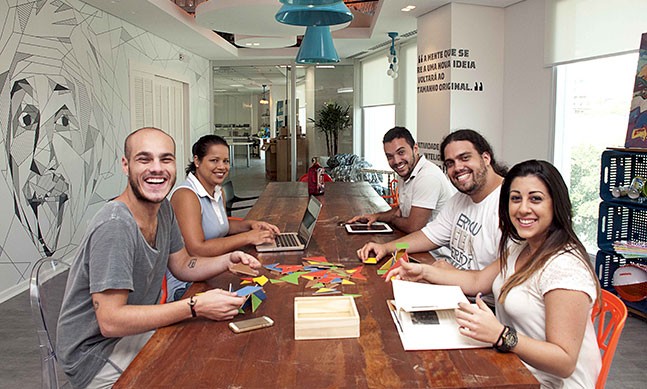The Escola Nacional de Seguros (Brazil’s National Insurance School) was founded in 1971 to encourage research and education of the country’s insurance industry. Ever since, the industry has changed significantly, and the School’s research role has expanded, producing papers and reports that more accurately display statistics on themes ranging from road accidents to climate change. As president of the 13-unit institution since 2005, Robert Bittar has already witnessed the rapid expansion and internationalisation of the industry in recent years, but he believes that this is still only the start of the process.
The Report Company: The private pensions, insurance and reinsurance industries in Brazil have matured quickly and consistently since the reinsurance market opened in 2007. What is your take on the changes in the industry?
Robert Bittar: The consistent level of growth can be attributed to a number of factors, and although I would highlight the opening of the market and the foreign investments the country has attracted, these are certainly not the only reasons. After the stabilisation of the Brazilian currency, we had heavy migration among the social classes. A new Brazilian middle class started to grow, more recently reaching the peak of its purchasing power which in turn leveraged the insurance industry. When families have stable jobs and higher incomes, they start planning better, which stimulates long-term savings, life insurance and private pension plans.
Not all the factors are external, however. The products on offer were modernised and the sales forces were improved. We had huge events like the World Youth Journey and the World Cup demanding huge investments in infrastructure, which, in turn, stimulated the construction industry. There was also an abundance of credit. All of these factors converged to stimulate the growth of the industry.
TRC: Growth also saw international companies entering the market, prices dropped and there was fierce competition. Some companies were able to consolidate, others not, so what are the challenges they face today?
RB: There is a difference between the challenges of the industry as a whole and those of each individual company or investor. The industry as a whole has to keep growing at the same double-digit pace, independent of the fact that the GDP is not expected to grow as much. GDP forecasts are not as favourable in this period of low growth, after the World Cup and elections in 2014, which has led to decreased investments, so it is natural that the overview currently doesn’t look so favourable.
I am certain that the scenario after 2015 will be somewhat different. The United States economy is recovering as are those of the major European economies, and Brazil can also ride that wave. It is a matter of being prepared and well-positioned. The insurance industry has a lot of room left to grow, because Brazil has more than 200 million people and market penetration remains very low. This is what foreign investors should be looking into. They are not thinking short term; they are looking 50 or 60 years into the future, and which country has great potential for consumption other than China and India? Brazil.
“The Brazilian market has great professionals. The only reason we are lacking is because of the rapid expansion of the market and the effects of under-investment in human resources at a time when growth was much lower.”Tweet This
TRC: One of the significant bottlenecks that Brazil faces is a lack of trained professionals in several key areas. Is this the case for the insurance industry?
RB: The Brazilian market has great professionals. The only reason we are lacking is because of the rapid expansion of the market and the effects of under-investment in human resources at a time when growth was much lower. When we started to grow and develop, trained personnel lagged behind, so this needs to improve, whilst also attracting good professionals from other areas.
Our school is dedicated to both training these professionals and attracting them, and we are discussing with the industry in order to establish the bottlenecks at each level. At the operational and mid-level, there is a slight lack of professionals, but these are easier to train. The problem is in the higher echelons, which take longer to train and are hard to attract from other areas. We have to accelerate and invest more in the training of those that are already working in the industry.
TRC: How is the relationship between the Escola Nacional de Seguros and private industry, and where is the highest demand for trained professionals?
RB: We are currently looking to identify exactly what the market needs. Companies sometimes come to us to organise in-company courses for them, which we do for all levels, from the technical/vocational up to MBAs. We are also creating a resumé bank, to which all professionals can add their CVs, and in the future, companies will also be able to place job openings there. I believe that one of the roles of schools should be to help students find a place in the market.
Unlike other schools around the world, our goal is to train people, but also to promote the industry, and carry out presentations on insurance around Brazil. We have journals, and a website called Tudo Sobre Seguros [All About Insurance] with information about every line of insurance, both private and public, for non-specialists. There is only one other site like this in the world, and ours has reached 1.5 million page views in 2014. It is also interactive, so people can post a question about private pension plans, for instance, and our network of technicians will write a reply within three days.
TRC: What are the future challenges for the Escola Nacional de Seguros?
RB: The goal of the school is to help the market face its challenges. That is our mission: to accelerate human resources training and keep monitoring what the market needs. We have been investing a lot in training programmes here and overseas. We have an advanced course on reinsurance in London, which started very recently, and a scholarship programme for Msc in actuarial science at City University London as well. We have agreements with American schools and one with the University of Munich, which has a very advanced study centre on risk management. We have been offering distance learning courses, too, and experiencing online lectures which have been proved very popular.
“I believe that one of the roles of schools should be to help students find a place in the market.”Tweet This
TRC: Why is the school’s Centre for the Research and Economics of Insurance so important?
RB: Many areas in Brazil, not just insurance, lack good statistics. I believe that the Escola Nacional de Seguros has to play the role of providing information for the market and investors as a whole so they can evaluate it effectively. We also want the school to serve as an information centre. For instance, what does climate change have to do with insurance? We may not be meteorologists, but it is clear that climate change increases the number of lightning strikes, floods and so on, and they all have impact on insurance risks. We want our school to be the environment where such ideas are discussed. If other universities around the world are studying issues like climate change and traffic mortality, then the school will also seek to partner with them to increase our knowledge pool.
Brazil’s statistics on traffic deaths aren’t accurate, for example. The federal and state highway police, the state traffic department and the forensics institute all have different figures, so our idea is to better compile them together to create a more accurate overall picture. If we also look at the causes of these accidents, then we are serving society, too.
Our third focus is the current changes in Brazilian demographics. Our country’s mortality table was established only recently, but we are a continental-sized country where the north and north-east have very different mortality rates compared to the rest of the country. The stratification of social classes has also had a major impact, and we can use the updated data and carry out new surveys to provide better data for the market.
TRC: What are your goals as president at the Escola Nacional de Seguros?
RB: Identifying what the market needs and seeking to address those needs as fast as possible. The insurance market is very dynamic, and we have to be ahead of the incoming demand.
“The Escola Nacional de Seguros has to play the role of providing information for the market and investors as a whole so they can evaluate it effectively. We want the school to serve as an information centre.”Tweet This


